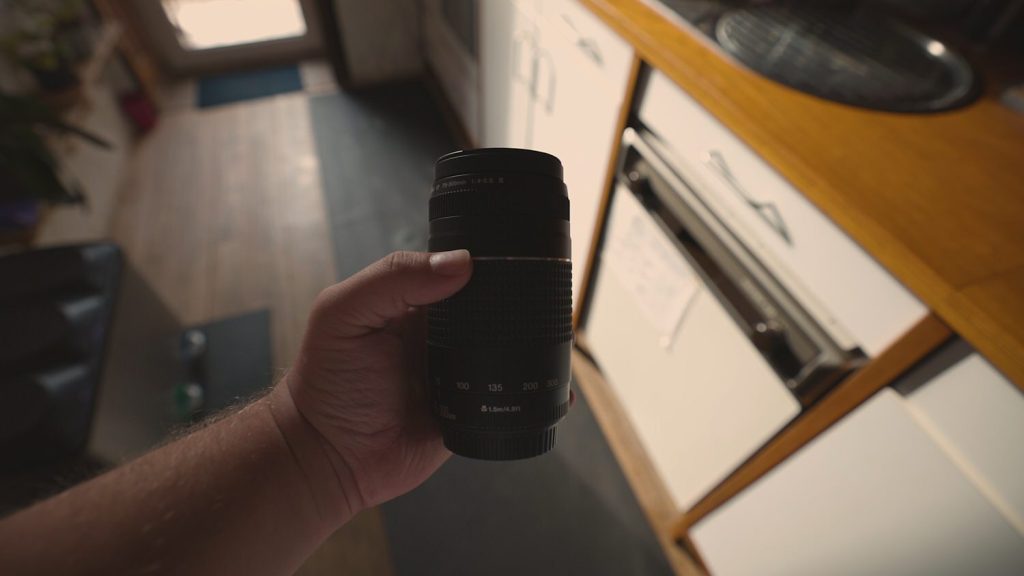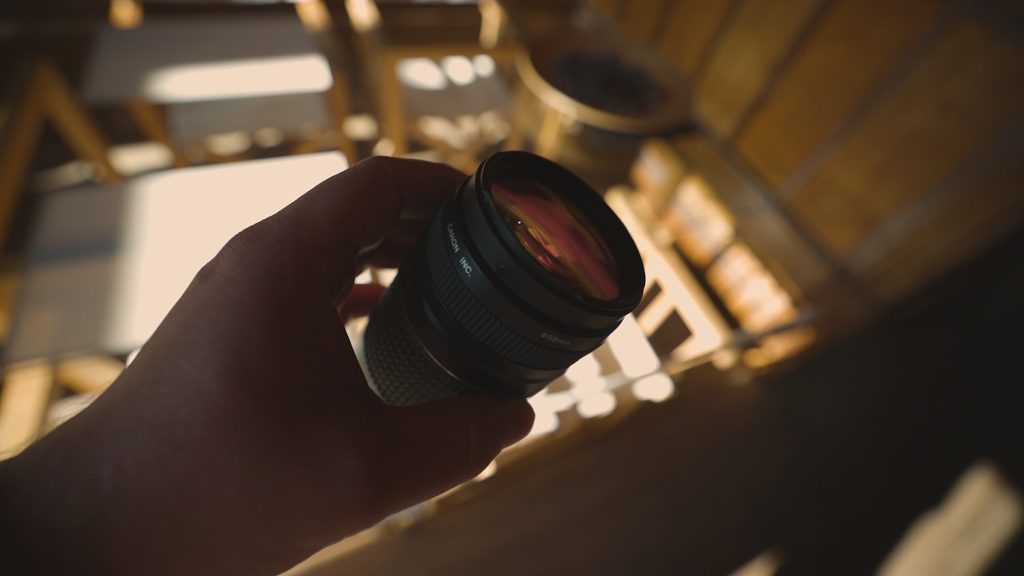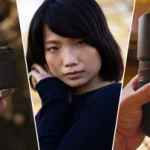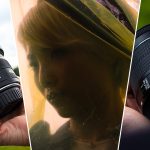So, is the Canon EF 75-300mm f4-5.6 III USM the worst lens in the Canon range, or a decent choice for the price? Some photographers advise you not to go anywhere near this lens. Others insist it’s all about knowing how to work with it. So, which opinion should you believe?
In this article, we will investigate the good, the bad and the downright ugly points of Canon’s veteran EF 75-300mm f4-5.6 III USM to help you decide whether this lens should be the telephoto zoom in your kit.

Specifications and Build
The EF 75-300mm lens is a budget lens so, of course, it is constructed almost entirely of plastic. It does, however, have a metal mounting ring which feels more durable than a plastic mount.
At 16.8oz (480g) it isn’t the heaviest lens on the market, but having that metal mount makes it feel secure.
At its regular size, the lens measures 2.8 x 4.8″ (71 x 122mm), so you can definitely feel it on your camera. The maximum full extension length is 7.78″ (197.5mm) which is probably longer than your hand.

Let’s Explain the Name
Canon EF 75-300mm f/4-5.6 III USM is a long and complicated name. In fact, it seems as if all lens names are full of photography jargon. But, once we decipher the code, we realise that long string of letters and numbers simply explains the lens.
In this case, Canon is obviously the manufacturer. The EF stands for electro-focus mount which connects the lens to the camera
The 75-300mm portion is the minimum and maximum focal lengths, while f/4-5.6 is the aperture range, or how wide the lens can open in order to allow in more or less light. In our case, the f/4 is the widest it can open at 75mm, so zoomed all the way out, and f/5.6 is the widest at 300mm, or zoomed all the way in.
Then finally, III means this is the third version of the lens, and USM is the micro ultrasonic motor which controls the autofocus.

Telephoto Zoom Lens
Confusion often reigns amongst new photographers when it comes to telephoto and zoom lenses. So what do the two terms mean?
A telephoto lens has a long reach and lets you focus on a subject which is far away. A medium telephoto lens will have a focal length between 60 and 200mm, and super telephotos extend beyond 300mm.
A telephoto lens can be prime, which means that it has a fixed focal length, or it can move through a range of focal lengths, in the case of zoom lenses.
As you can see by its name, the Canon EF 75-300mm is a zoom lens with a focal length which ranges from 75mm all the way to 300mm.
Auto and Manual Focus
The autofocus is precise when used at the lower end of the range but runs into difficulties when you move out beyond 200mm. That means you’ll probably want to switch to manual focus if your subject is far away.
There have been complaints that the micro USM is rather noisy, and this is one of the reasons why many enthusiasts don’t use it for video work.
Image Stabilisation
Another reason why this lens may not be the best for video work is the lack of image stabilisation.
While this doesn’t matter too much at 75mm, it’s almost impossible to control camera shake when zoomed out to 300mm. That said, there are ways to get around the problem.
The most obvious solution is to use a tripod, and that becomes essential when working at 200-300mm. Another option is to shoot stills with a fast shutter speed such as 1/125sec or even 1/500sec. If you’re on the move and don’t want to carry a tripod, using fast shutter speeds can minimise the jostle.

The Zoom Mechanism
When it comes to the zoom, you might need a to apply slight force to get it working, and if you’re trying to move it slowly and carefully, it can tend to stick. But if you rotate the barrel quickly, you’ll find the action is far more smooth.
It’s true that you’ll also get quite a bit of chromatic aberration at those longer distances, but the lens produces a beautiful, clear picture between 75-135mm, especially if you stop it down to f/4.
Bokeh
It is possible to get soft bokeh when using the EF 75-300 but, again, you have to know how to work with this lens.
My best advice is to make sure you have left enough space between your subject and background. That way you’ll have a nicely blurred background with your subject in focus in the foreground.
Image Quality
The lens has roots way back in the 1990s when Canon designed it as a budget telephoto lens for film cameras. That means the EF 75-300mm lens will fit nicely onto a full-frame camera as well as one with a crop sensor.
You may, however, find some vignetting occurring when you use it on a full-frame. Fortunately, there is little-to-none with a crop sensor camera which could be a factor to consider.
If You’re On a Budget
It’s unfair to compare the Canon EF 75-300mm with vastly more expensive telephoto/zoom lenses. It cannot and does not live up to those. That being said, not everyone can afford a terrific lens, so we need to consider whether this lens gives bang for the buck as a budget lens.
You can buy it new or refurbished as a single lens, and it’s also often included as part of a bundle. So, if you’re just beginning your photography journey and want a cheap telephoto lens to get you started then this can be a reasonable option.
Many beginners don’t care about the finer points that professional photographers obsess over. Right now, you may just want an affordable lens that allows you to get lovely, close-up shots of your favourite pet or some wildlife at the zoo.
And, when you are shooting in good light, using a fast shutter speed, you can undoubtedly achieve decent wildlife shots as well as some striking portrait images.

A Lens For Rough Conditions
Another time you might be glad to have a budget lens is during those expeditions when conditions could get rough.
Perhaps you spend a lot of time down on the beach, or you’re planning a holiday in a slightly dodgy location? You still want to capture those images, but do you want to risk an expensive lens?
Some photographers are happy to use this particular Canon model when they want to photograph sunsets, moon-shots and portraits on the beach. That way they can zoom in on that chamois on a rocky outcrop or capture flamingos on the lake, but won’t cry too much if the lens gets banged up on the journey.
Bear in mind, however, that this lens isn’t weatherproof.
Conclusion
So, when you see the Canon EF 75-300mm f4-5.6 III USM in your next bundle, or if it comes up on sale, should you buy this lens?
Many beginners will get several years of satisfying use before upgrading to a better, but more expensive model.
In the end, I’d have to say the decision depends on three things: Your budget, how you want to use it, and whether you’re prepared to learn how to take successful photographs with this lens.
I invite you to have a look at some of my other articles. We have something for everyone, whether you’re interested in audio, or cameras and lenses. Alternatively, if you prefer video reviews, feel free to have a look at my YouTube channel.
Product Links
Down below you will find all of the items mentioned in this article.



